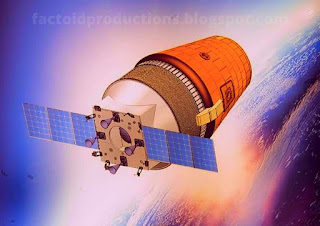Is India capable of sending humans to space? - Gaganyaan Mission
 |
| Gaganyaan Spacecraft |
Gaganyaan is a human spaceflight mission intended to be the first done by ISRO (Indian Space Research Organization).
This mission will take Indian astronauts (also called Vyomanauts) on an ambitious trip to space.
This will make India only the fourth country to launch astronauts into space only after United States, Russia, and China.
This entire mission is done on a 1.34 billion dollar budget.
Spacecraft
 |
| Space Capsule |
The gaganyaan capsule has the capacity to take about 3 astronauts into space. This has two modules, the crew module, and the Service module.
The Crew module will stay as their habitat for their whole mission.
The gaganyaan mission components are manufactured by DRDO, HAL, and ISRO. It has a volume of about 8m3.
This space capsule will have various life support systems designed to protect the astronauts.
The astronauts will be in their spacesuits specifically designed by ISRO. It has one oxygen cylinder enabling the astronaut to breathe for about 60 minutes.
This crew capsule has a launch mass
of about 8.2 tons, which is why this is carried by GSLV Mk-III rocket.
Launch Vehicle
The launch vehicle GSLV Mk-III is a three-stage medium-lift rocket developed by ISRO.
This gslv launch vehicle has the capacity to take about 10 tons to Low Earth orbit.
It is similar in comparison to ULA’s Atlas V and SpaceX’s Falcon 9.
It also has two solid boosters on the side to provide the necessary lift. This launcher is the one that took Chandrayaan 2 to the moon.
This rocket will be used in upcoming Gaganyaan missions as well.
Timeline
|
Mission |
Date |
Type |
Info |
Result |
|
December 2014 |
Sub-orbital |
Test of Gaganyaan’s heat shield |
Success |
|
|
July 2018 |
Atmospheric |
Abort test of SDSC |
Success |
|
|
Gaganyaan 1 |
December 2021 |
LEO |
Unmanned first
orbital flight |
Planned |
|
Gaganyaan 2 |
2022 |
LEO |
Unmanned Second
Orbital flight |
Planned |
|
Gaganyaan 3 |
2023 |
LEO |
Crewed first flight |
Planned |
As said above
, Gaganyaan Re-entry test and Pad- abort test were done successfully. Also due to the covid
19 pandemic, the date for Gaganyaan 1 may be delayed to 2022.
Launch Procedure
In Gaganyaan 3, after liftoff from Satish Dhavan Space Centre; the crew capsule will take about 16 minutes to reach Low Earth Orbit.
Then the space capsule will be stationed at 300-400km in Low Earth Orbit. The solar panels get deployed and the crew conducts experiments on the capsule. They will spend about 7 days in space.
During re-entry, the solar panels and the service module are disposed of and burn up in the atmosphere.
The capsule comes through the atmosphere with hard aerobraking using the heat shield. Then the parachute gets deployed slowing the spacecraft from 216m/s to 11m/s. It would most probably land on the Arabian Sea.
CrewExperiments proposed
to be on the Space Capsule
·
Astro
Biology
·
Space
Medicine
·
Fluid and
Materials
·
Fundamental
Physics
·
Life
Sciences in Space
·
Life
support
·
Biowaste
management
·
Space
Hazards in LEO
·
Sensor
·
Space to
Ground Communication
The experiment opportunity is offered to International Community.
That said, India is far more than capable to launch humans into space. Their gslv launch vehicle has a hundred per cent success rate.
What do you think about Indian crewed Spaceflight? Will it succeed?
Tell us in the comments
Also Read: Can ISRO beat NASA by 2030?
Why ISRO's SSLV rocket could be the most affordable rocket in the world?






0 Comments